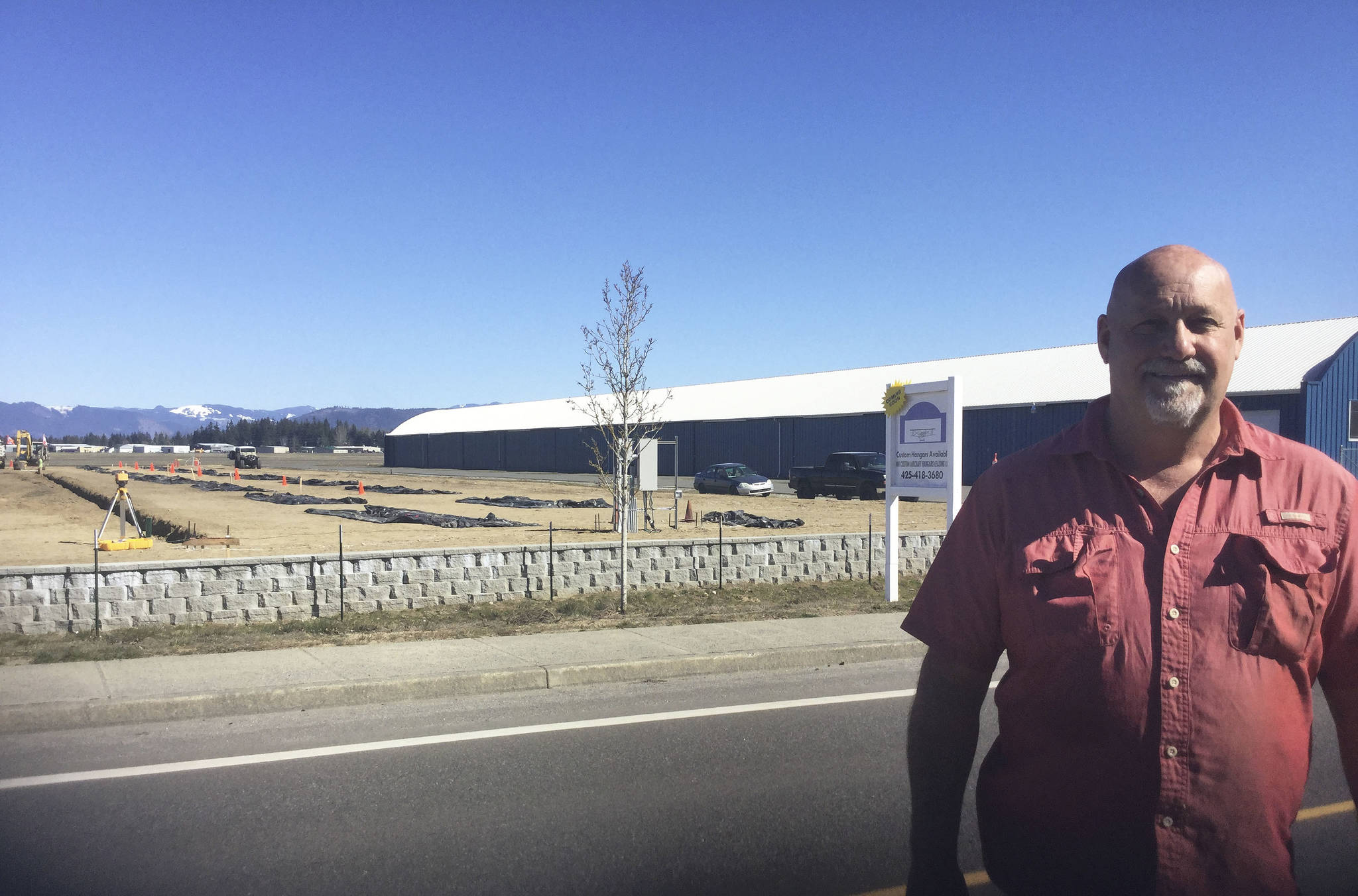ARLINGTON – If you ask pilots around Arlington Municipal Airport, Duane Wilcoxon is the local flyer who will burn through 40 gallons of fuel and a day landing on gravel bars in rivers between here and Concrete.
That’s when he isn’t busy restoring cars, planes and motorcycles in his personal shop located in the airport’s industrial park.
“When I grow up, I want to be me,” he said, jokingly.
When it’s time to get to work, though, Wilcoxon builds hangars to house the planes that fly out of the airport that is home base to him, in a community he loves and invests in.
His handiwork is already on display at the airport, with the blue-colored Carerra hangars, among others. Now he’s building more units.
Wilcoxon, owner of NW Custom Aircraft Hangars, is spending more than $4 million to build three new T-hangars on 4 acres on the west side of the airport.
Each of the 380-by-38 f00t buildings will hold 18 planes, with hydraulic hangar doors, higher ceilings and modeled after the Quonset hut-style design he likes as a throwback to 1920s and 1930s architecture. He used the same design for the Carrera buildings.
He’s also putting up a rock wall, sprinkler systems, 100 trees, grass, LED lighting and security cameras. The hangars will be served with compressed air, natural gas, water and sewer.
Wilcoxon said he hoped to get the project going sooner, but the city’s new design standards and more rigorous review by outsourced plans examiner work caused delays and significant cost increases. Where it used to take him three months to get plans approved, now it has taken 15 months, three pages of plans is now 41 pages, and his engineering costs quadrupled.
He appealed to the city’s Airport Commission and was granted a six-month grace period for the project, aware that yet more new International Building Codes are coming this year that could seriously hamper future hangar building. City officials said the code updates could stall hangar construction to the point where it doesn’t pencil out to spend the money for the paltry return on investment.
That said, when the first three hangars are completed later this year, he wants to build a matching set to the north.
Wilcoxon said there won’t be a shortage of planes to fill his hangars. He already has all the space reserved in his first building. He said they will be coming from Paine Field, Skagit Regional Airport and other locations as well.
Severe winter weather in January damaged several hangars beyond repair at the Skagit airport, which had some of their tenant pilots seeking new storage.
“They’re calling me,” he said. “We have an opportunity to build hangars here and attract more pilots.”
For the future, Wilcoxon recommends the airport look at demolishing dilapidated hangars and building new ones in their place, rather than pushing north on unused airport property.
“I would like to keep building these newer-style hangars and get to the point where we have a uniform look like this throughout the whole area,” Wilcoxon said.
A recent general aviation industry study stated that within a 120-mile radius from Bellingham south to Tenino, 360 pilots are on waiting lists for hangar space.



